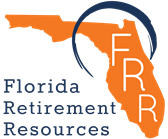Below is a list of the Investment Plan questions we get asked the most. If you don't see your question answered, or if you have additional questions pertaining to your retirement, click the button below to schedule a meeting with one of our representatives who can help answer your questions at a time convenient for you.
FRS Investment Plan FAQ
Can I contribute more to my FRS Investment Plan?
No, the FRS does not allow members to increase their contributions past the standard 3% which each member already pays. It is possible though to roll other retirement account funds into the investment plan though if the member would like to do so after their separation of service.
What is the HIS (Health Insurance Subsidy)?
The health insurance subsidy is a monthly benefit retirees can apply for to help offset health insurance costs with a monthly benefit paid on top of a retirees monthly pension benefit (or direct deposited to a bank account for investment plan members). The benefit is calculated as follows: Number of years employed in the FRS x 7.50$ = monthly benefit. For example, if a member works 20 years in the FRS, then their monthly HIS benefit would be $150. The benefit can be transferred to a spouse as a beneficiary, and the maximum payment is $225 per month.
Is my pension taxable?
Your pension is taxable as ordinary income and will contribute to any other earned income for the calendar year.
When am I eligible for retirement?
After 1 year of service
How does my Investment plan account grow?
Your account grows in 2 ways, contributions, and investment growth. The contributions come from both you and your employer. Each member pays 3% of their income into their account. Employers then contribute 8.3% for standard risk, and 16% for special risk. The second portion, and often the greater percent of the total account value at retirement age comes from investment growth. There are 19 default investment funds available from the FRS core funds list, and then their are many more options available in the Self-Directed Brokerage Account option as well. Choosing investments that are suitable to match the member's objectives and risk tolerance is a very important part of being a member on the investment plan.
What are my beneficiary options on the investment plan?
Anyone you choose. You can list your spouse, child, grandchild, family trust, or even the neighbor's dog walker. The beneficiary will receive the account balance whether the member passes away while working or after separation of service.
Can I go into DROP on the investment plan?
No, there is no DROP on the investment plan because there is no pension benefit to accrue a DROP benefit from.
Can I come back to work after I retire?
The short answer is Yes, after 6 months there will not be a penalty. Please see full detailed description here.
Can I make up the difference from my own funds to switch from the investment plan to the pension plan?
If there is a deficit when changing from the investment plan to the pension plan, the member will be responsible for the balance. The balance may be paid in many cases from 403(b) or 457 assets.
Which is better, the pension plan or the investment plan?
There is no plan which is "better" or "worse" than the other. Both plans have their positives and drawbacks. You should speak with a financial professional to help determine which plan would be more suitable for your retirement.
What is HB5007?
Increases Special Risk Investment plan employer contributions and extends DROP for Law Enforcement Officers to 8 years. Please see post here for more information.
Can I choose how my money is invested in the investment plan?
You certainly can. There are 19 default mutual fund choices offered to FRS members, but there is also the SDBA (Self-Directed Brokerage Account) option available which allows members to choose from thousands of additional investment options for how you would like to invest your FRS funds based on your goals and objectives.
What is a 2nd Election?
A 2nd election is when an FRS member decides to change from their current retirement benefit to another. Typically this will be pension members switching to the investment plan, or investment plan to pension. When a pension plan members switches to the investment plan, the member's account will be credited with a starting balance in the investment plan, and then the member's future contributions will be added to the member's investment plan account, with an accompanying employer match. When an investment plan member switches to the pension plan, the process requires the member to trade their investment plan balance for an amount determined by the FRS to "buy back" into the pension. This number can sometimes be quite a bit more than the investment plan member's account value, and in that case the member would have to make up the difference themself if they want to proceed with the 2nd election.
Additionally, a 2nd election is permanent and members should evaluate the decision in detail before switching plans as they will not have the option to switch back again in the future.
What is the SDBA (Self-Directed Brokerage Account)?
The SDBA is an alternative to the FRS's default 19 investment fund options. You can choose how you want your funds to be invested within the SDBA outside of the default funds based on your goals and objectives. It should be noted that picking individual investments can be risky and it is recommended you speak with a financial professional before making any investment choices. You are also responsible for any fees associated with using or transacting within your SDBA. The benefit of the SDBA is the ability of the member being able to have more control in how your funds will be invested.
Should I retire on the pension plan or the investment plan?
This is one of the most important decisions that can be made and is based on your specific situation. A closer comparison is here.
Also, please download our book “Your FRS, your Choice”
Information sourced from MyFRS.com


